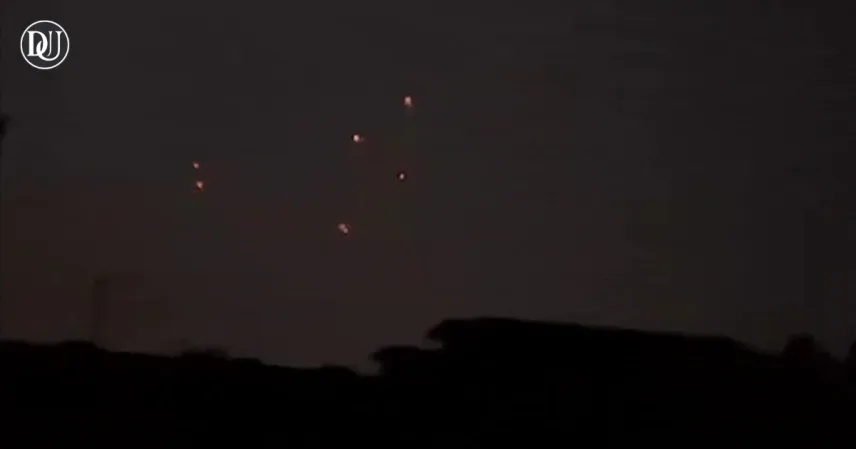In the stillness of night, when most families are wrapped in the comfort of sleep, an unfamiliar sound pierced the skies over several Indian cities. Drones — silent, cold, and uninvited — crossed into Indian airspace, targeting not just military installations but areas where everyday people live and work. The sense of violation was deep and sudden, sending waves of fear and confusion through entire communities.
A Sudden Surge of Silent Threats
What made these attacks even more unsettling was their reach. From the quiet, mountainous stretches of Jammu and Kashmir to the busy, energetic cities of Punjab and even the dry, open plains of Rajasthan, the drones seemed to arrive in coordinated waves. In cities like Amritsar, residents were jolted by red alerts as security systems scrambled to respond. The precision and frequency of these drone appearances brought up alarming questions: How vulnerable are we? And what more could be on the way?
Homes Burned, Families Scarred
For many, the terror wasn’t just in the skies — it came crashing into their homes. In Punjab, one family’s peaceful night turned into a nightmare when falling debris from an intercepted drone caused a fire in their house, injuring several family members. It’s moments like these that make the headlines hit differently. These aren't distant war zones; this is right here — where families gather for dinner, where children do their homework, where people dream of a better tomorrow.
An Unseen Weight on Every Mind
The emotional toll is something numbers can’t measure. People now lie awake at night, their ears tuned not to lullabies or distant trains, but to the faint buzz that could mean danger. In towns and villages near the border, the air has grown heavy with anxiety. The once-normal sound of a flying object now sends people rushing indoors. Security may be bolstered, but peace of mind is harder to restore.
Communities Standing Strong
Yet, amid the fear, something inspiring is happening. Neighborhoods are coming together. People are checking on their neighbors, forming local watch groups, and staying informed. There's a shared determination — a sense that while the threats may be new, the strength of community is timeless. Unity is quietly becoming the shield behind the scenes.
What These Attacks Really Mean
These drone incidents aren't just isolated flashes of conflict — they are a signal of how modern threats are evolving. Technology has made it easier than ever for harm to bypass physical barriers. No longer limited to borders, danger can now descend from the sky, swift and often undetected. That shift in warfare calls for more than just military readiness — it demands smarter surveillance, better technology, and faster communication between defense forces and civilians.
The Human Cost Beyond the Headlines
There’s something deeply human that gets overlooked in all this — the trauma, the displacement, the invisible wounds. The stress of constant alertness, the fear that tomorrow might bring more damage, and the sorrow of watching your safe space turn into a war zone… these emotions don’t fade overnight. It will take time, support, and empathy to help affected communities recover — not just physically, but emotionally too.
Looking to the Future
India now faces a crucial moment. The urgency to secure our skies has never been clearer. This isn’t just about defending borders anymore — it’s about protecting people. Investments in anti-drone systems, strengthening intelligence networks, and creating clear community communication strategies must be top priorities. But alongside these, there must also be a focus on mental health services and local support, ensuring that healing is part of our defense strategy.
Choosing Resilience Over Fear
The attacks serve as a loud wake-up call, but they are also a reminder of our resilience. Even in uncertainty, there is strength in unity, and courage in preparation. The resolve of everyday people — from mothers who comfort their children during alerts to local volunteers organizing safety drills — paints a powerful picture of what it means to stand tall, even under shadowed skies.
In Conclusion
The skies may have turned hostile for a moment, but the spirit of the people remains unshaken. These drone attacks have shown us our vulnerabilities, yes — but they have also revealed our courage, our unity, and our will to protect what we hold dear. As we move forward, let’s turn our collective fear into focused action, our pain into purpose, and our silence into a stronger, safer future.










